Effortless Migration from cPanel Email to Google Workspace: Your Step-by-Step Guide
Introduction
Ready to upgrade your email services? This detailed guide simplifies the process of migrating your cPanel email accounts to Google Workspace. Follow these steps and switch over effortlessly, preserving all your crucial data and communications.
Section 1: Setting the Stage in Google Admin Console
Log in to your Google Admin console at http://admin.google.com/ and upon successful login, you will be landed on the dashboard, as illustrated in Figure 1 below.
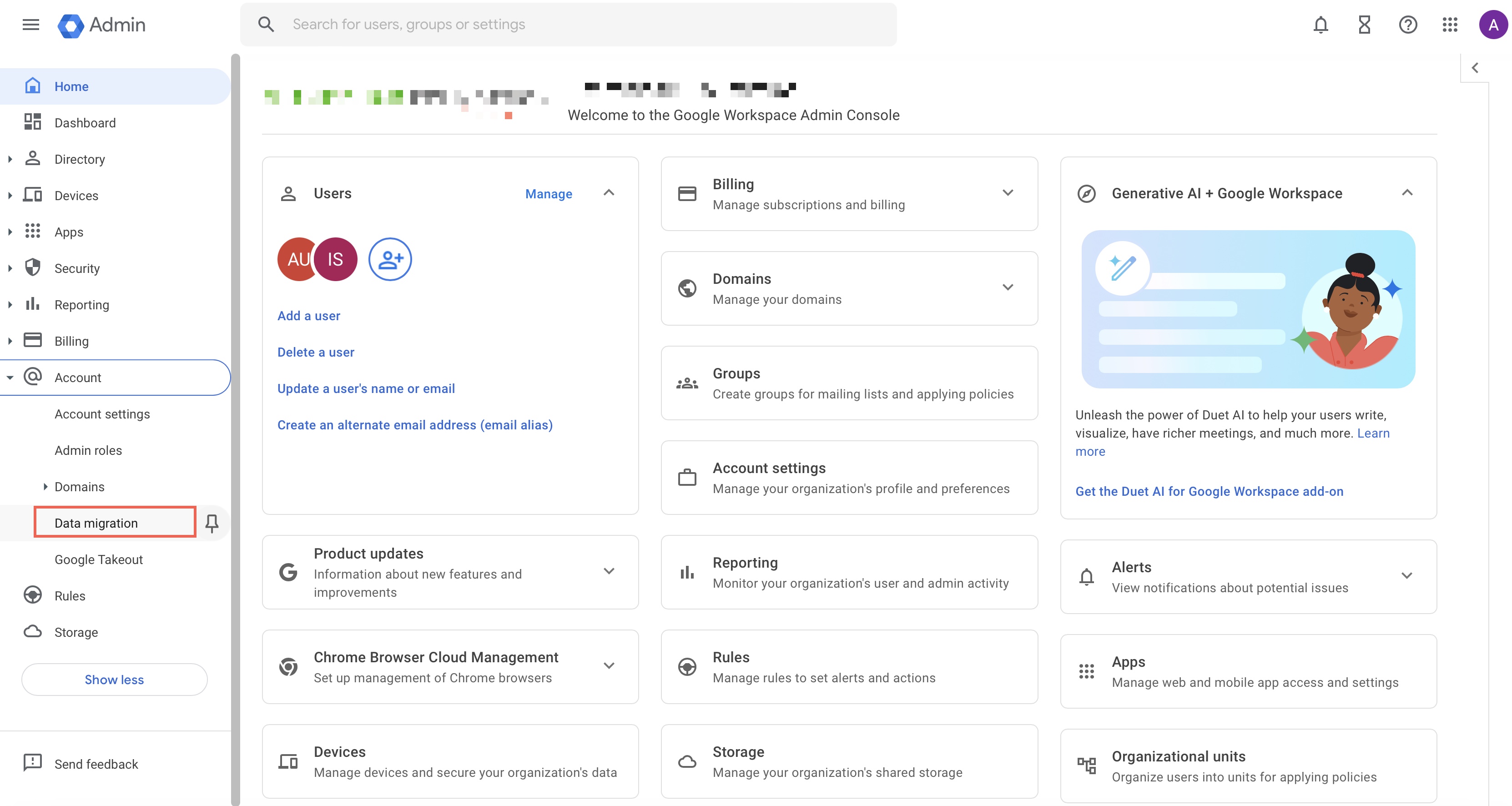
Click on the Account and then Data Migration from the left side menu, as illustrated in Figure 1 above.
Click the SET DATA MIGRATION UP link from the data migration dashboard, as illustrated in Figure 2 below.
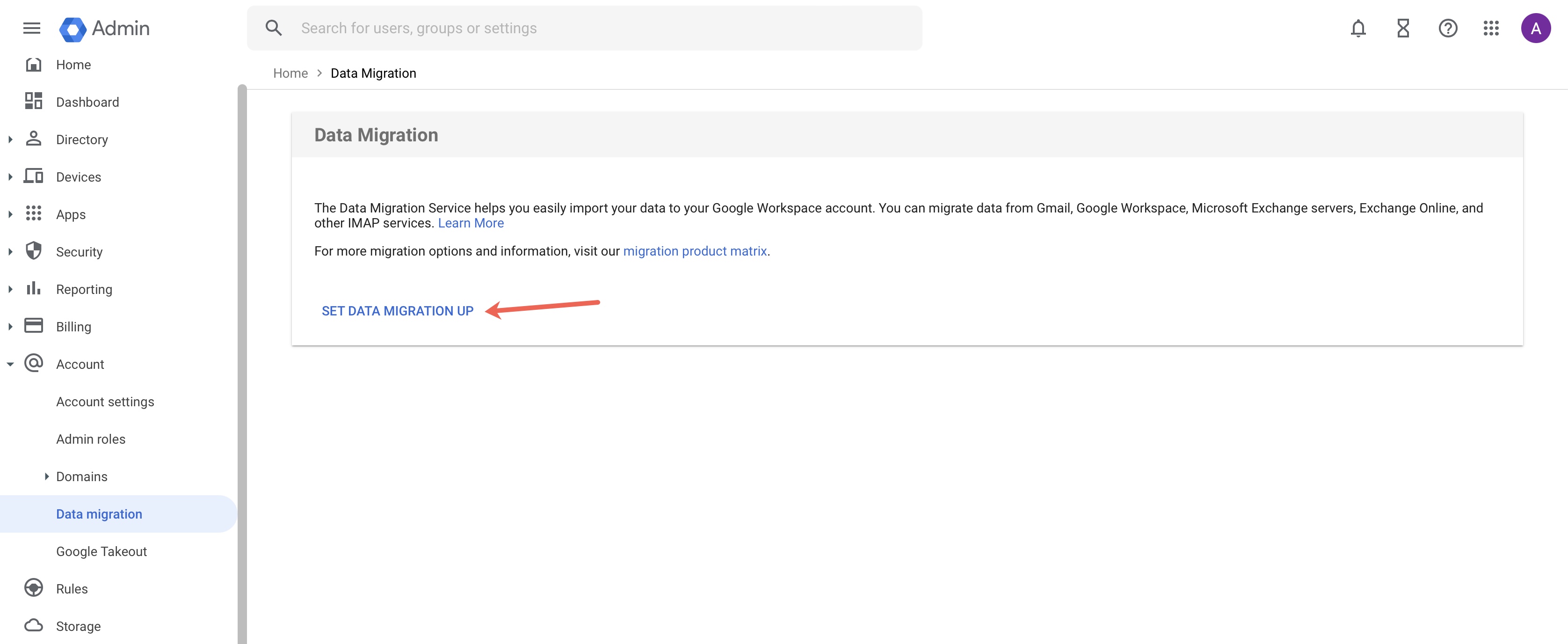
After clicking the link a full-screen popup window will open to configure the migration service details, as illustrated in Figure 3 below.
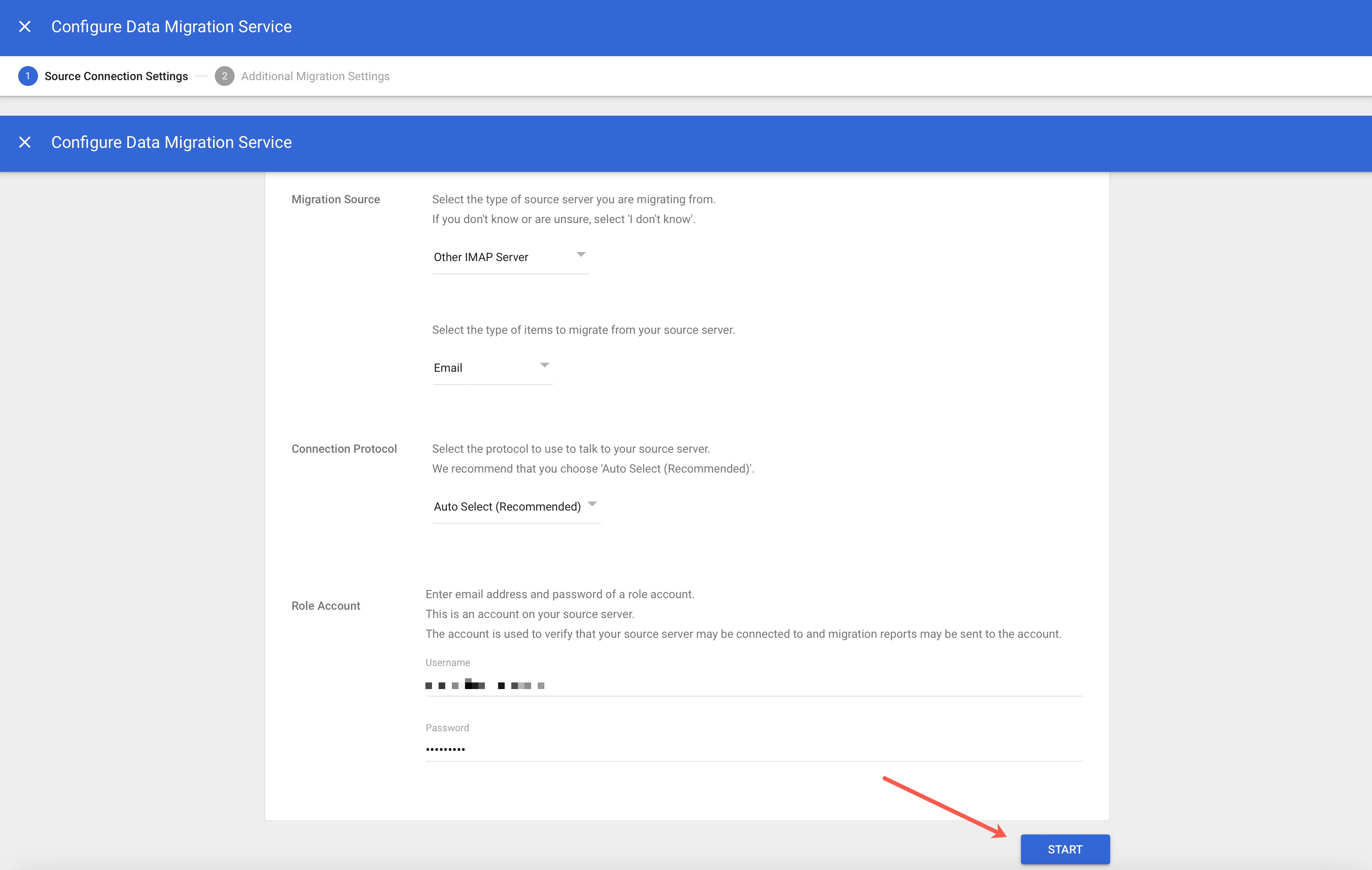
Section 2: Defining Your Migration Parameters
Migration Source: Choose the type of service you're migrating from—options include Google Workspace, Gmail, Microsoft Exchange, Microsoft Office 365, or other IMAP servers like cPanel.
Data Type: Select the type of data you wish to migrate—options include Calendar, Contact, and Gmail.
Connection Protocol: If you know the exact protocol, select it; otherwise, opt for Google's "Auto Select" feature to auto-detect the protocol from your source.
Role Account: Provide the credentials for an account from your source service to establish the migration connection.
Section 3: Commencing Migration
Once all the details are selected, click the Start button, as illustrated in Figure 3 above. After you click the start button another popup will open, as illustrated in Figure 4 below.
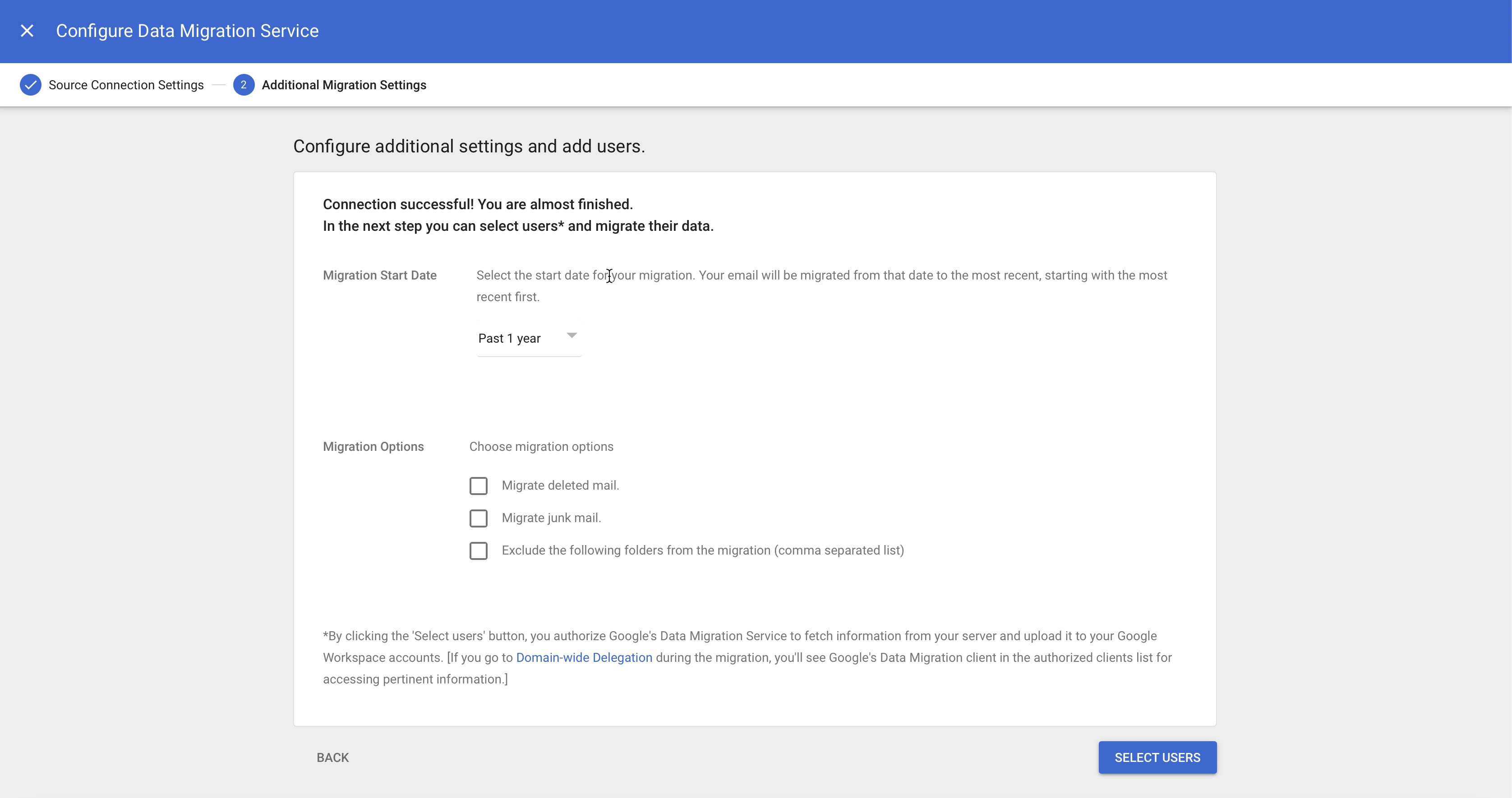
Migration Start Date: Here you need to select dates like 1 Year, 6 Months, or 3 Months from the dropdown menu or you can select the option Custom Date to initiate the migration.
Migration Options: Here you need to check the boxes that you want to migrate, as illustrated in Figure 4 below.
Click on the Select Users button available at the bottom of the screen once select the options, as illustrated in Figure 4 above.
Once Google verifies the details a data migration batch will be created, as illustrated in Figure 5 below.
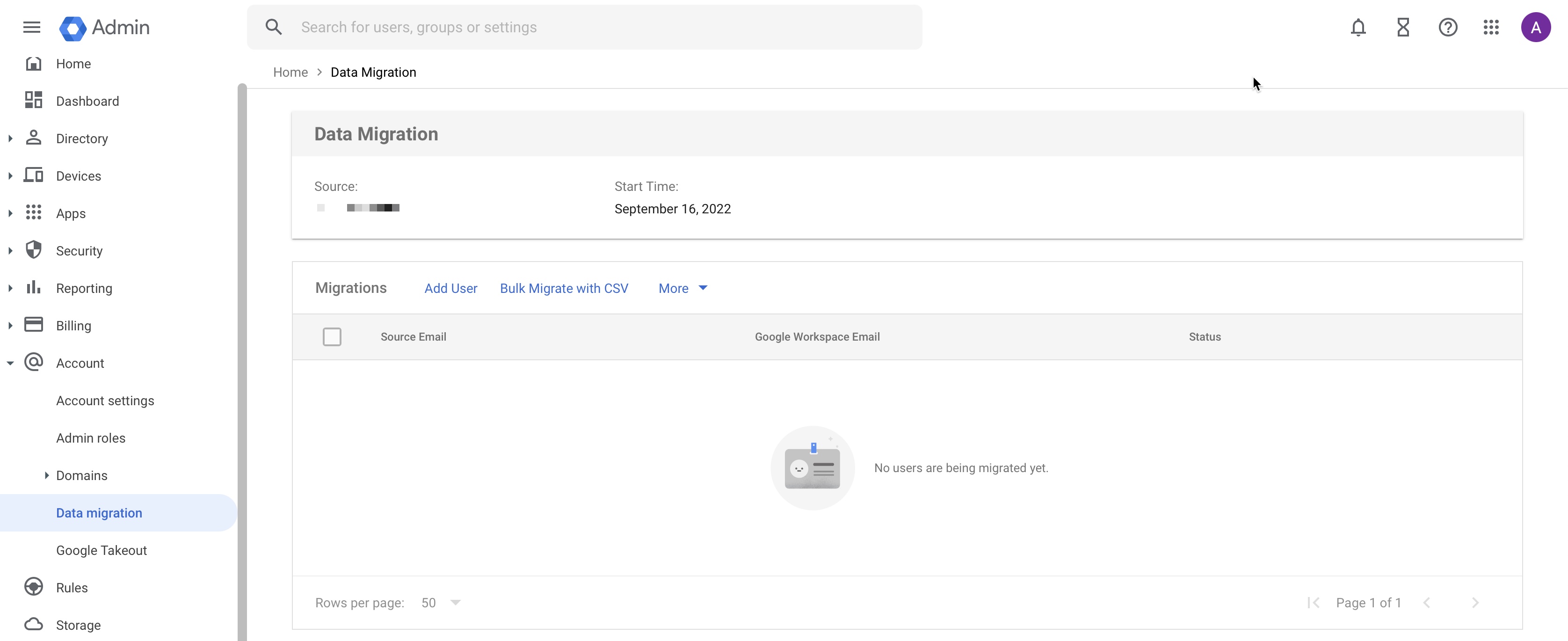
Here in the data migration batch dashboard, you can further create the individual details of the services to be migrated.
Here you need to add the exact user details of the source service and the exact details of the destination service, as illustrated in Figure 6 below.
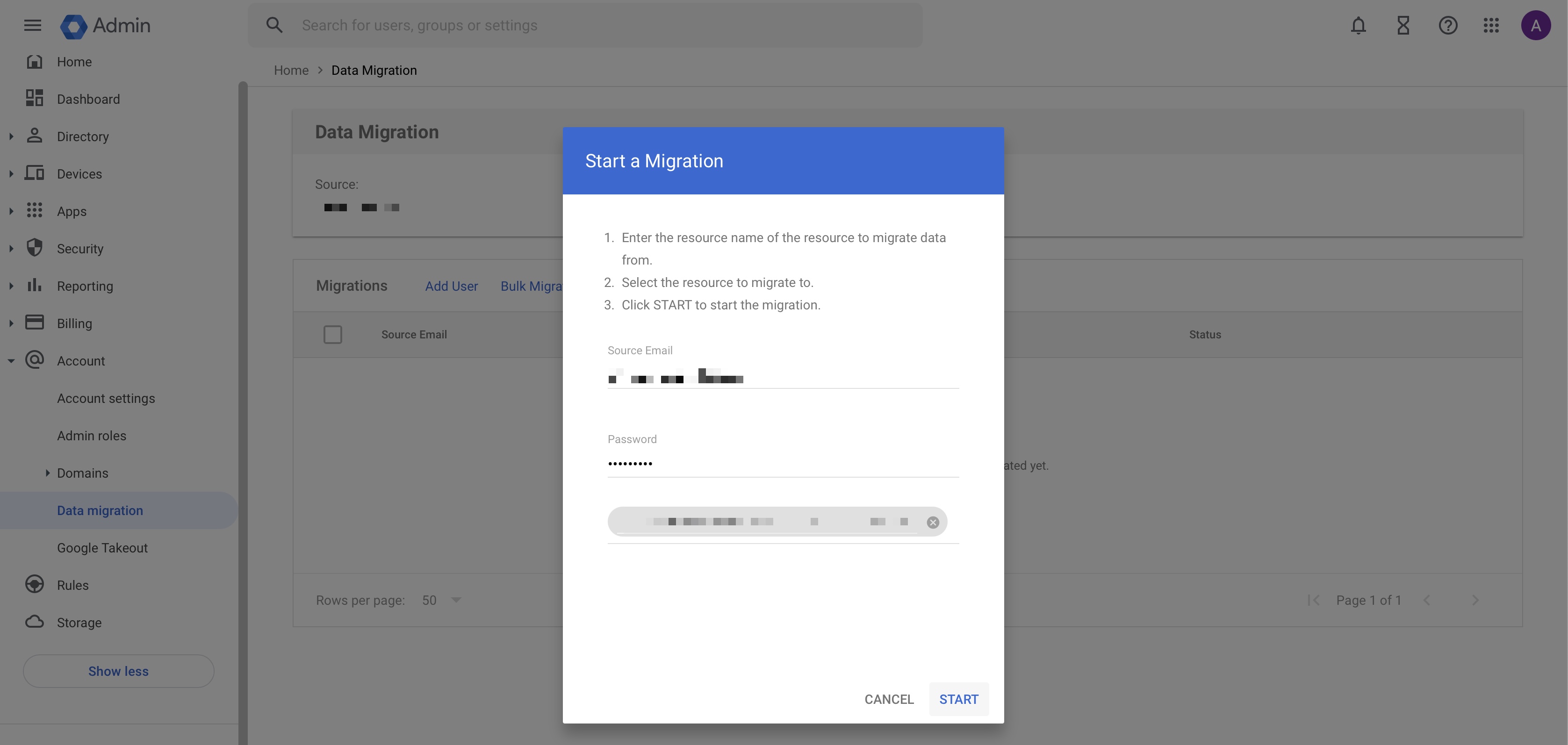
In order to add more users to the migration list you need to repeat the above steps manually or you can use the Bulk migration CSV file upload method to create the entire list at once.
Bulk Migration with CSV: Here you need to create a CSV file with the source user name, source user name password and destination user name with comma separated in each row. Once the CSV file is created upload it by clicking the button Attach File, as illustrated in Figure 7 below.
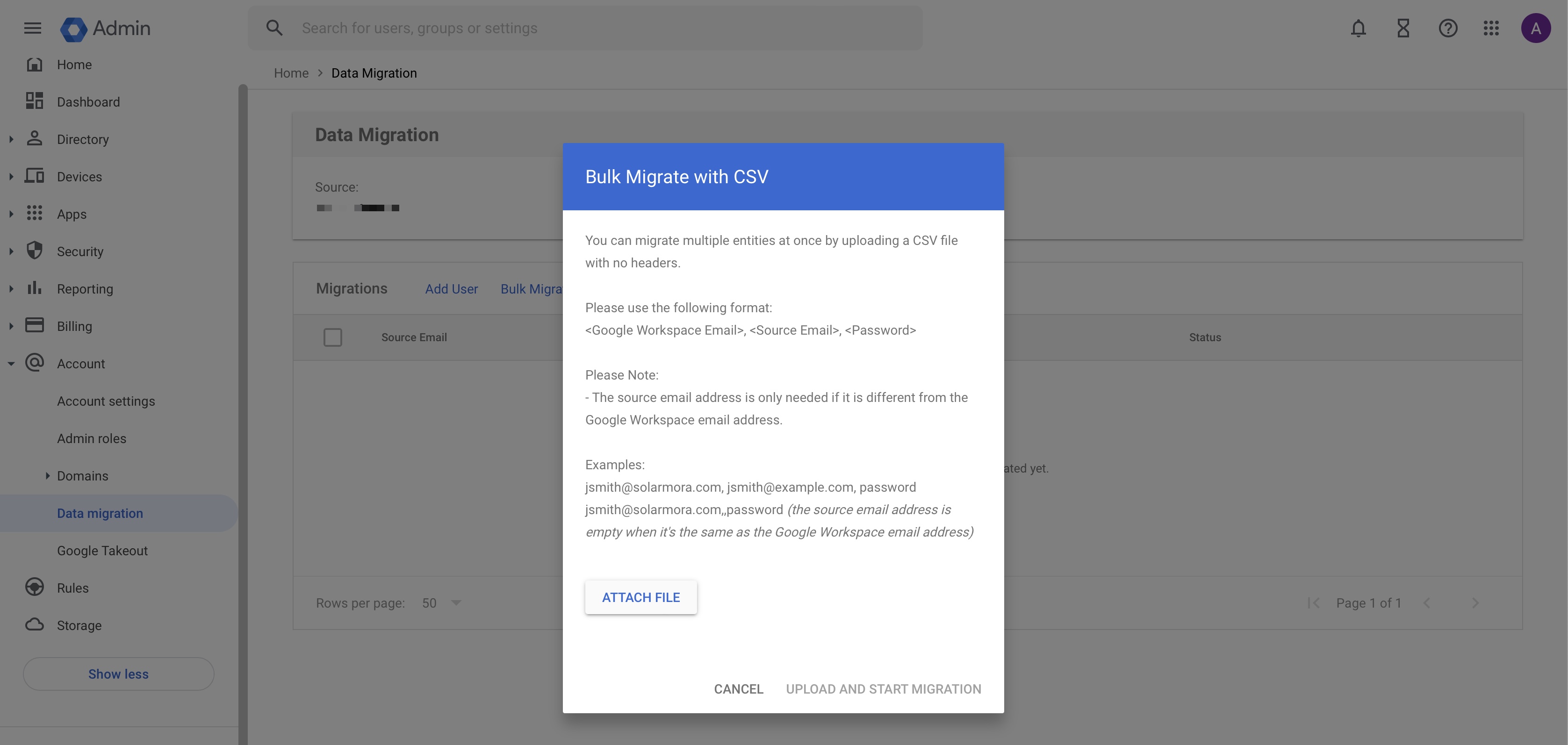
Section 4: Monitoring and Adjusting Migration
Once the addition of source and destination users is created, Google will start migrating the data in the back-end process and you can able to see the percentage of migration completed in the migration batch dashboard.
You can able to perform different migrated-related tasks by clicking the option More, as illustrated in Figure 8 below.
- Pause All Migration: Pause the migration process in between.
- Email Reports: Email the migration report to an email ID.
- Download the migration item error report: Download the error report to your local system.
- Migration setting: Modify the migration setting options.
- Exit Migration: Terminate the ongoing migration process.
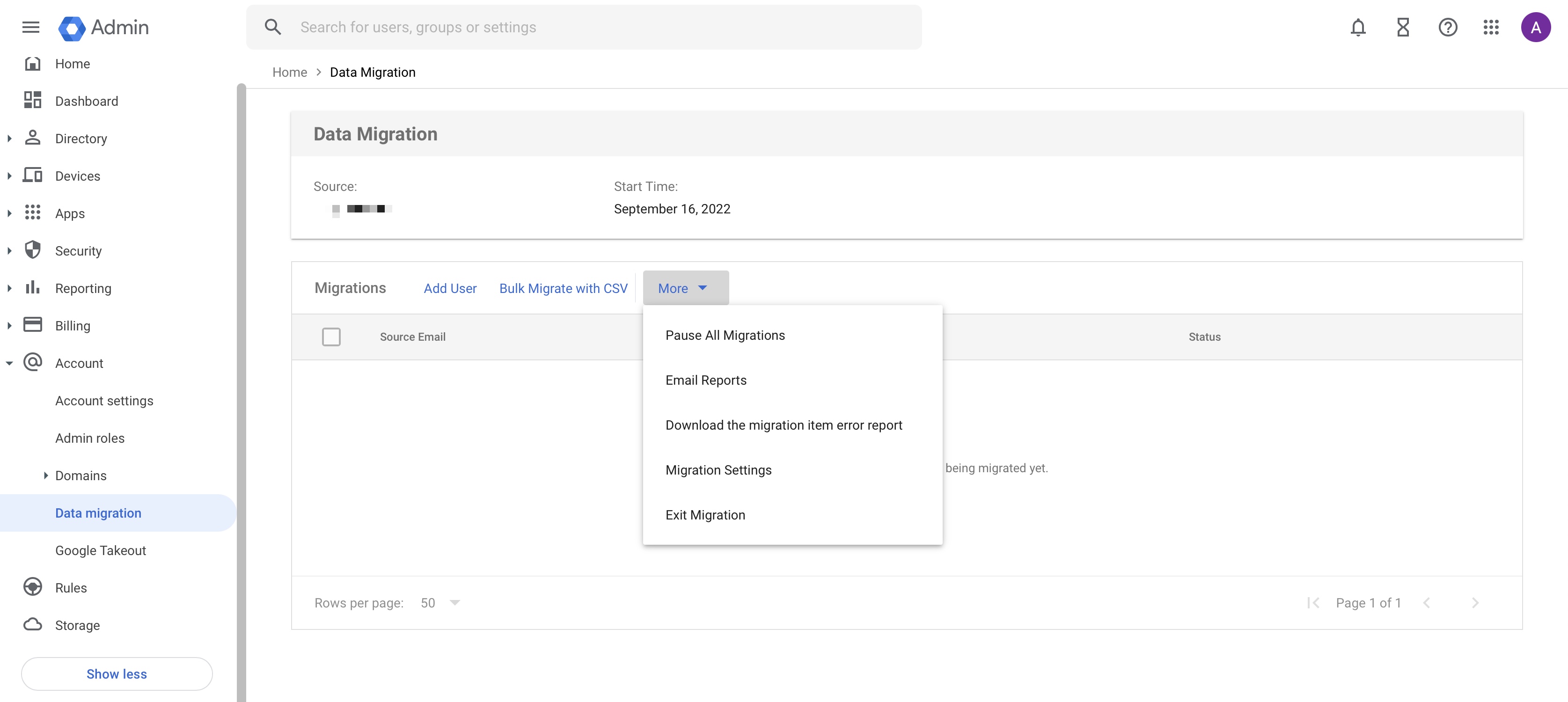
Conclusion
Successfully migrating your cPanel email to Google Workspace doesn’t have to be a daunting task. With this guide, you can transition smoothly and efficiently. For further support or inquiries, the Batoi Support Team is always here to assist you.


























